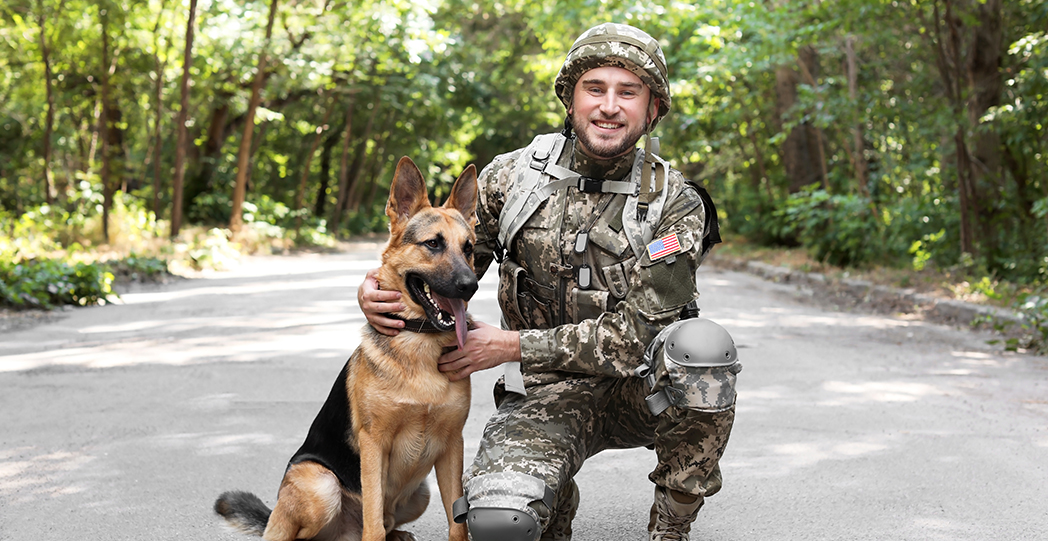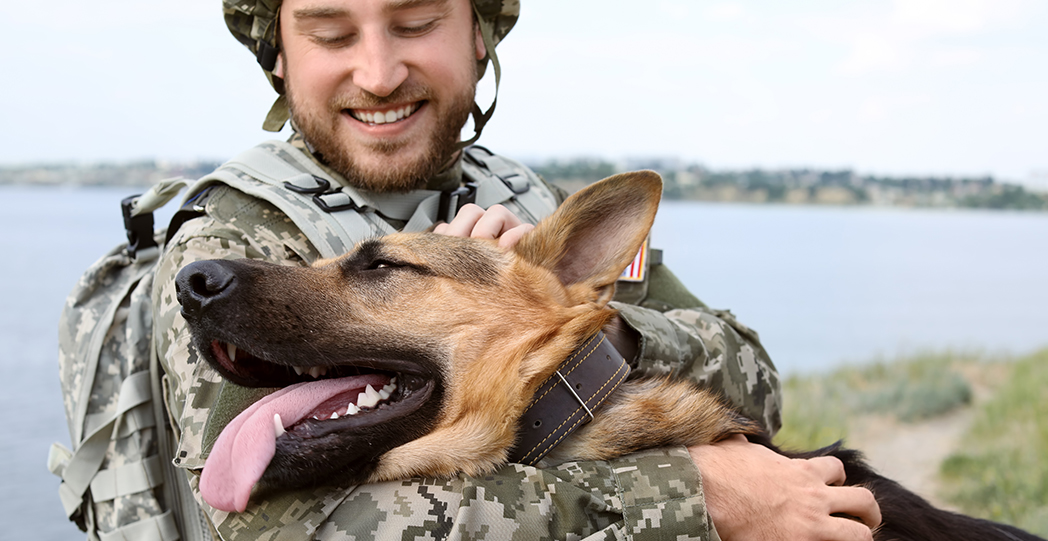Dogs have had a place in warfare for thousands of years, serving their humans as everything from morale boosters and mascots to bomb sniffers and engineers. The U.S. Armed Forces formalized the use of dogs in the military with its War Dog Program, also known as K9 Corps, on March 13, 1942. With just as much fervor and determination as their handlers, military K9s have thwarted attacks, saved soldiers, uncovered explosives, and ambushed enemies in nearly every major American war since the program was established.
Celebrated annually on March 13th, K9 Veterans Day honors the service and sacrifices of military dogs through the years. This national holiday gained attention with the efforts of the late Joe White, a Vietnam War veteran, dog handler, and trainer. K9 Veterans Day highlights the unique history of war dogs and provides these dedicated animals with some well-deserved recognition.
U.S. military dogs throughout history
Whether formally or informally, dogs have positively impacted America’s military efforts for centuries. As far back as the Civil War, there are stories of these K9s using their unique skills to combat the enemy.
The use of dogs in the military has changed and evolved as warfare has changed and evolved. During World War I, the French and Germans deployed tens of thousands of dogs into battle. The U.S. Military was not actively using dogs, but one four-legged individual made quite an impression.
Stubby quickly befriended a group of Connecticut soldiers from the 102nd Infantry when he wandered into their encampment. This quick bond led the unit to sneak Stubby aboard when they shipped out to France. Far more than a mascot, Stubby boosted morale on the battlefield and warned soldiers of attacks. During a raid in Germany, Stubby was injured by a grenade. He was promoted to Sergeant and became quite a celebrity upon his return home.
Entering World War II, the U.S. Military formalized its War Dog Program and developed specific roles for its K9 companions. After the attack on Pearl Harbor, sentry dogs became very valuable. Chips—a German shepherd/collie/husky mix from New York—earned fame for capturing 14 Italian soldiers while injured.
War dogs also played a major role in the Vietnam War. Nearly 4,000 dogs and 10,000 handlers served across all branches of the military—the largest effort of military dogs during any U.S. combat era. Dogs were used to scout out traps, stand guard, search mines and tunnels, and more.
In Iraq and Afghanistan, K9s mostly work to uncover and warn of explosives. An improvised explosive device, or IED, is extremely difficult to detect, but a dog’s keen sense of smell can pick up the explosive odors that humans cannot. Best known for his work with U.S. Navy SEAL Team Six during the raid on Osama Bin Laden’s compound, K9 Cairo helped soldiers detect bombs, hidden enemies, and secret passageways. He helped the SEALs secure the perimeter around the Al Qaeda Safe House.
Sharing a special skill set.
Undoubtedly, dogs make great companions, but they also possess abilities and traits that their human counterparts can’t provide. Dogs offer a uniquely strong sense of smell, the ability to go places that soldiers cannot enter, and the power to subdue or intimidate the enemy.
When the War Dog Program first started, the U.S. Military deployed the skills of about three dozen different breeds. Over the years, the breed of choice became German Shepherds due to their loyalty, intelligence, athleticism, and fierceness. These dependable dogs are fast learners who can easily adapt to the situation at hand.
The jobs these dogs are called to do can vary as much as the work of their accompanying soldiers. German Shepherds specifically often fill several roles, while retrievers and terriers, for example, are specifically used to sniff out explosives and narcotics.
Dogs are trained for many special roles in the military, such as sentry, patrol, explosive detection, search, messenger, and others. All of the dogs used by the U.S. Military are trained by the 341st Military Working Dog Training Squadron on Lackland Air Force Base in Texas.
Celebrating their service.
To commemorate the brave efforts of our military dogs, head over to the U.S. War Dogs Memorial with your pooch. Dedicated in 2006, this bronze statue sits near the New Jersey Vietnam Veterans’ Memorial in Holmdel, New Jersey. The sculpture depicts a Vietnam War soldier kneeling with his German Shepherd on a granite base.
Several states also have erected statues to honor military dogs. The memorial at March Field Air Museum in Riverside, California, features tiles at the base of a statue with the names of handlers and their K9 companions.
Residents of South Lyon, Michigan, took it upon themselves after World War II to dedicate a stretch of roadway as the final resting place for several famous four-legged veterans. The original granite monument was dedicated in 1946. Around 2009, local residents cleaned up and restored the area with new monuments, including a Vietnam K9 Memorial Wall. The memorial has become known as the “Arlington of dogs.”
The National War Dog Cemetery, located at the Naval Base in Guam, honors war dogs that served with the U.S. Marine Corps and died in the Second Battle of Guam in 1944.
If you and your pooch aren’t up for a road trip, there are plenty of other ways to honor our K9 veterans:
- Check out local memorials in your state or community
- Post your tributes and photos using #NationalK9VeteransDay
- Visit K-9courage.com to support America’s working dogs and share their stories
- Consider adopting a retired K9 veteran who needs a home
- Teach your own pup something new to honor the spirit of our dedicated K9 veterans





